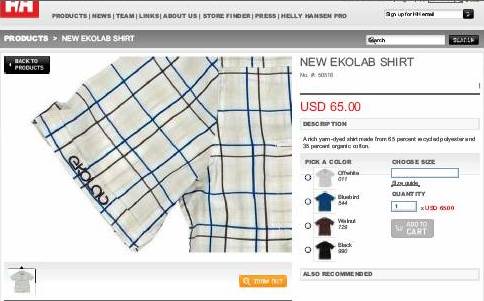Entries in Trademark Infringement (368)
Court Finds No Trademark Acquiescence Through "Apparent Authority" Theory
 In Scentsy, Inc. v. deDisse, wickless candle maker Scentsy filed a trademark infringement suit in the District of Idaho. It claimed its former independent sales person, Mary deDisse, melted down its candle wax, repackaged it in smaller containers, affixed Scentsy’s logo, and sold the altered product to Scentsy’s authorized sales persons for resale. It sought a preliminary injunction enjoining this practice.
In Scentsy, Inc. v. deDisse, wickless candle maker Scentsy filed a trademark infringement suit in the District of Idaho. It claimed its former independent sales person, Mary deDisse, melted down its candle wax, repackaged it in smaller containers, affixed Scentsy’s logo, and sold the altered product to Scentsy’s authorized sales persons for resale. It sought a preliminary injunction enjoining this practice.
Ms. deDisse argued that Scentsy gave her permission to use its mark through its independent consultants, who had “apparent authority” to authorize her use of the Scentsy logo on altered and repackaged product. She argued its having done so amounted to acquiescence.
The court didn’t buy it.
It found Scentsy’s independent sales consultant agreement prohibits its sales persons from repackaging, re-labeling, or altering the labeling on Scentsy products — which as a former Scentsy sales person Ms. deDisse knew or should have known. The court also found that Scentsy dispelled any impression that it approved of deDisse’s conduct by sending her three cease-and-desist letters before filing suit.
“The promptness and frequency of Scentsy’s objections demonstrate Scentsy’s vigilance in protecting its trademark rights — not its acquiescence to deDisse’s use,” the court found.
It noted that acquiescence is a defense to trademark infringement, but Ms. deDisse did not show it here.
It concluded that “deDisse’s attempt to rely on emails from Scentsy consultants to establish consent is unreasonable in light of Scentsy’s formal and repeated objections to deDisse’s use of its mark. Therefore, Scentsy has shown it is likely to prevail on the merits of its Lanham Act claims.”
It granted Scentsy’s motion.
The case cite is Scentsy, Inc. v. deDisse, 2010 WL 1579688, No. 09-496 (D. Idaho April 19, 2010).
Seven Year Delay, Coupled with Witness' Death, Leads to Dismissal for Laches
In Matsunoki Group, Inc. v. Timberwork Oregon, Inc., plaintiff home builder claimed that defendant home builder infringed its HAIKU HOUSES trademark by displaying a confusingly similar mark on its Web site.
The problem was, plaintiff first asserted those claims in 2001, but filed suit in 2008.
Defendant argued that plaintiff’s claims were barred by laches, which bars an otherwise valid claim when a plaintiff’s unreasonable delay in enforcing its rights unfairly prejudices the defendant.
The Northern District of California found that’s what happened here. In particular, it found a witness’ death and the defendant’s reliance on the continued use of its mark constituted undisputed evidence of unfair prejudice. On April 16, therefore, it dismissed plaintiff’s claims on summary judgment.
“‘Evidentiary prejudice includes such things as lost, stale, or degraded evidence, or witnesses whose memories have faded or who have died,’” the court found. “One of the most important witnesses in this case, Gordon Steen, died in 2004. Matsunoki asserts that Steen authored the intellectual property at issue in this case, an assertion Defendants strongly dispute. Without the opportunity to cross examine Steen, Defendants’ ability to defend themselves will be hamstrung. Steen is clearly the best source for information about the manner in which the intellectual property in question was authored and transferred. If Matsunoki had not delayed in bringing the suit, it could have tried this case before Steen’s death, or his testimony could have at least been preserved in some fashion. Therefore, the Court concludes that Matsunoki’s delay has caused Defendants evidentiary prejudice.
“A defendant may demonstrate expectation prejudice ‘by showing that it took actions or suffered consequences that it would not have, had the plaintiff brought suit promptly.’ After Matsunoki did not respond to Timberwork’s February 27, 2001 letter asserting Timberwork’s rights to the intellectual property, Timberwork continued to use the mark in its catalogs, promotional material and websites and has built its business in reliance on the marks. It would be inequitable to permit Matsunoki to wait seven years before bringing suit and then profit from Defendants’ successes.”
The case cite is Matsunoki Group, Inc. v. Timberwork Oregon, Inc., No. 08-04078, 2010 WL 1532351 (N.D. Cal. April 16, 2010).
Does EKOLAB for Clothing Infringe ECOLAB for Pest Control Services?
 Screen shot featuring one of Helly Hansen’s
Screen shot featuring one of Helly Hansen’s
EKOLAB-branded shirts above; Ecolab’s ECOLAB mark below
 On April 14, Helly Hansen (U.S.) Inc., filed suit in the Western District against Ecolab USA, Inc., seeking a declaration that its use of EKOLAB does not infringe Ecolab’s rights in its ECOLAB registered trademark.
On April 14, Helly Hansen (U.S.) Inc., filed suit in the Western District against Ecolab USA, Inc., seeking a declaration that its use of EKOLAB does not infringe Ecolab’s rights in its ECOLAB registered trademark.
The complaint states Helly Hansen makes outdoor sports apparel. It states Ecolab makes industrial sanitation products, including “insect, rodent and pest extermination and control services,” and “fungicides, bactericides, and germicides.”
The complaint alleges Helly’s mark is adapted from Norwegian words meaning “ecological laboratory.” It says the suit follows a letter Ecolab sent Helly in February saying that Helly’s EKOLAB product line was infringing Ecolab’s trademark and requesting that Helly stop using the mark.
Ecolab has not yet answered the complaint.
The case cite is Helly Hansen (U.S.) Inc. v. Ecolab USA, Inc., No. 10-00632 (W.D. Wash.).
Autodesk and Open Design Alliance Settle Remaining Part of Trademark Dispute
What remained of the trademark dispute between Autodesk, Inc., and Open Design Alliance has settled. (See previous STL posts on the Western District part of the dispute here, here, here, and here.)
Autodesk sells design, engineering, and entertainment software, including AUTOCAD computer-aided design (CAD) software. The Seattle-based Open Design Alliance is an association of CAD customers and vendors that promote open industry-standard formats for the exchange of CAD data.
The dispute centered on Open Design Alliance’s use and registration of an open drawing format for CAD data called OPENDWG, which Autodesk claimed infringed its trademark rights in DWG.
In 2007, the parties entered a stipulated Consent Judgment that disposed of the Western District portion of the suit (summarized here).
Autodesk summarized the settlement of the Trademark Trial and Appeal Board portion as follows: “Autodesk initiated proceedings with the United States Patent and Trademark Office, Trademark Trial and Appeal Board (TTAB) in 2007 to cancel the ODA’s DWG-based trademark registrations to avoid confusion with Autodesk’s established DWG brand and trademark. The ODA has agreed to cancel its DWG-based trademark registrations and cease use of DWG and DWG-based trademarks in its product marketing and branding, and Autodesk has agreed to withdraw the cancellation proceedings with the TTAB. The settlement does not preclude ODA from developing interoperable software or from using the .dwg extension in its file names. Terms and conditions of the settlement agreement are confidential.”
The case cite is Autodesk, Inc. v. Open Design Alliance, Cancellation No. 92047002 (TTAB).
Turf Holdings Sues Former Franchisee Over Continued Use of Trade Dress
Franchise relationships are governed by contract.
Depending on the franchisor’s agreement with the franchisee, there are certain things a franchisee must do with regard to the franchisor’s trademarks once the franchise relationship is terminated.
Franchisor Turf Holdings, Inc., recently filed suit in the Western District against Vanderburg Corp., one of its former franchisees.
The complaint alleges that Vanderburg failed to remove Turf Holding’s trademarks pursuant to the parties’ franchise agreement, which also amounted to trademark and trade dress infringement. Turf Holdings separately moved for a preliminary injunction.
The complaint states: “Defendants refused to de-identify their business within three days as required by Section 9.2 of the Franchise Agreement, and have failed to do so to date. Specifically, Defendants failed to completely remove the ‘Weed Man’ mark from the door of their business and failed to change th vehicles’ distinctive green and yellow color scheme and tank configuration. Upon information and belief, the ‘Weed Man’ mark has not been completely removed from the vehicles, as typically the outline of the mark can still be seen after removal of the decal containing the mark unless the vehicles are re-painted, which Defendants have not done.”
Vanderburg has not yet filed its answer.
The case cite is Turf Holdings, Inc. v. Vanderburg Corp., No. 10-0477 (W.D. Wash.).